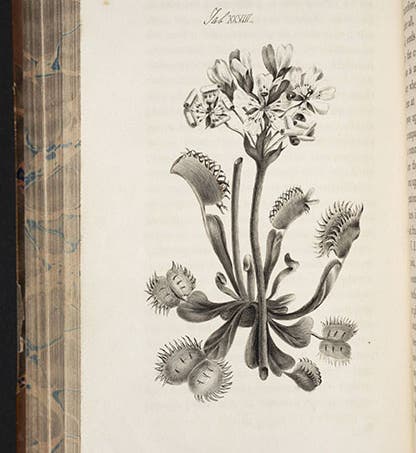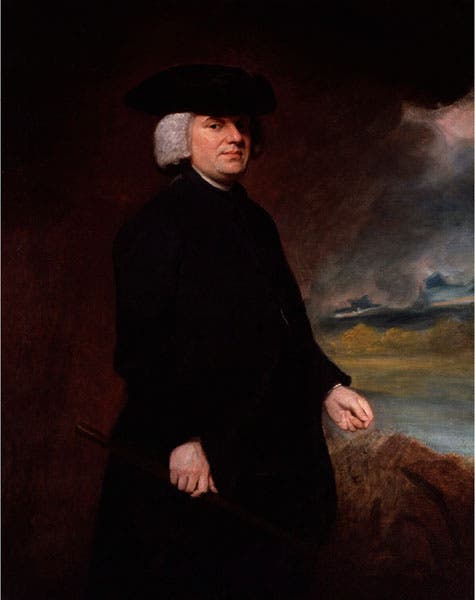Scientist of the Day - William Paley
William Paley, an English theologian, died May 25, 1805, at age 61. In 1802, Paley published Natural theology; or, Evidences of the existence and attributes of the Deity, collected from the appearances of nature. In this work, Paley attempted to demonstrate that nature everywhere exhibits design, and that, by studying nature, one can not only prove the existence of a Designer, or God, but one can determine the attributes of that deity from his handiwork. You might notice that the previous sentence is really just a restatement of the title of Paley's book, which also gives a label to this view of nature: natural theology. Natural theology had originated at the time of Robert Boyle (who ardently embraced it), and found its greatest early exponent in the work of John Ray and his influential book: The Wisdom of God as Manifested in the Works of the Creation (1691). But Paley was the spokesman for a new generation, and his Natural Theology was immensely successful. The Library has a copy of the 7th edition, and it was published in 1804, only two years after the first edition, which gives one some idea of its popularity. Charles Darwin (and every other Cambridge student) read Paley in school – Darwin even lived in Paley's old rooms at Christ's College – and Darwin was as convinced as everyone else that the study of nature is a religious pursuit. Little did he suspect at the time that, thirty years later, he would render Paley obsolete, since evolution by natural selection completely undercuts the possibility of nature’s preordained design.
Our copy of Paley's Natural Theology is of interest because it is what they call in the book trade "extra-illustrated", meaning it has illustrations bound in that were not part of the original publication. In this case, there are eight additional watercolors showing the anatomy of the eye; here is one. And there an additional 23 pen and brush illustrations, such as our opening image of a Venus flytrap. These 23 images were all copied from a book called Illustrations of Paley's Natural Theology, published by James Paxton in 1826. We have Paxton's book as well in our collections, where one can see the Venus flytrap as it was originally engraved in 1826. We surmise that some 19th-century owner of the 1804 Natural Theology used Paxton's book as a model to illustrate their own copy of Paley, which makes it quite special. We hope to acquire the first edition of Paley someday, but for now, we are happy with our unique extra-illustrated 7th edition, which we acquired from San Francisco bookseller Jeremy Norman in 2008. We acquired Paxton’s Illustrations the same year, from Michael Phelps in the UK, as we prepared for our Charles Darwin bicentennial exhibition of 2009, The Grandeur of Life. Paley was famous enough in his day to warrant a portrait by the great George Romney. It hangs in the National Portrait Gallery in London (second image). Dr. William B. Ashworth, Jr., Consultant for the History of Science, Linda Hall Library and Associate Professor emeritus, Department of History, University of Missouri-Kansas City. Comments or corrections are welcome; please direct to ashworthw@umkc.edu.




![Andromeda and Perseus, constellations figured by James Thornhill, with star positions determined by John Flamsteed, in Atlas coelestis, plate [15], 1729 (Linda Hall Library)](https://assets-us-01.kc-usercontent.com:443/9dd25524-761a-000d-d79f-86a5086d4774/1b30cfec-5be6-4297-a7fb-97255ba992e5/thornhill1.jpg?w=210&h=210&auto=format&fit=crop)


